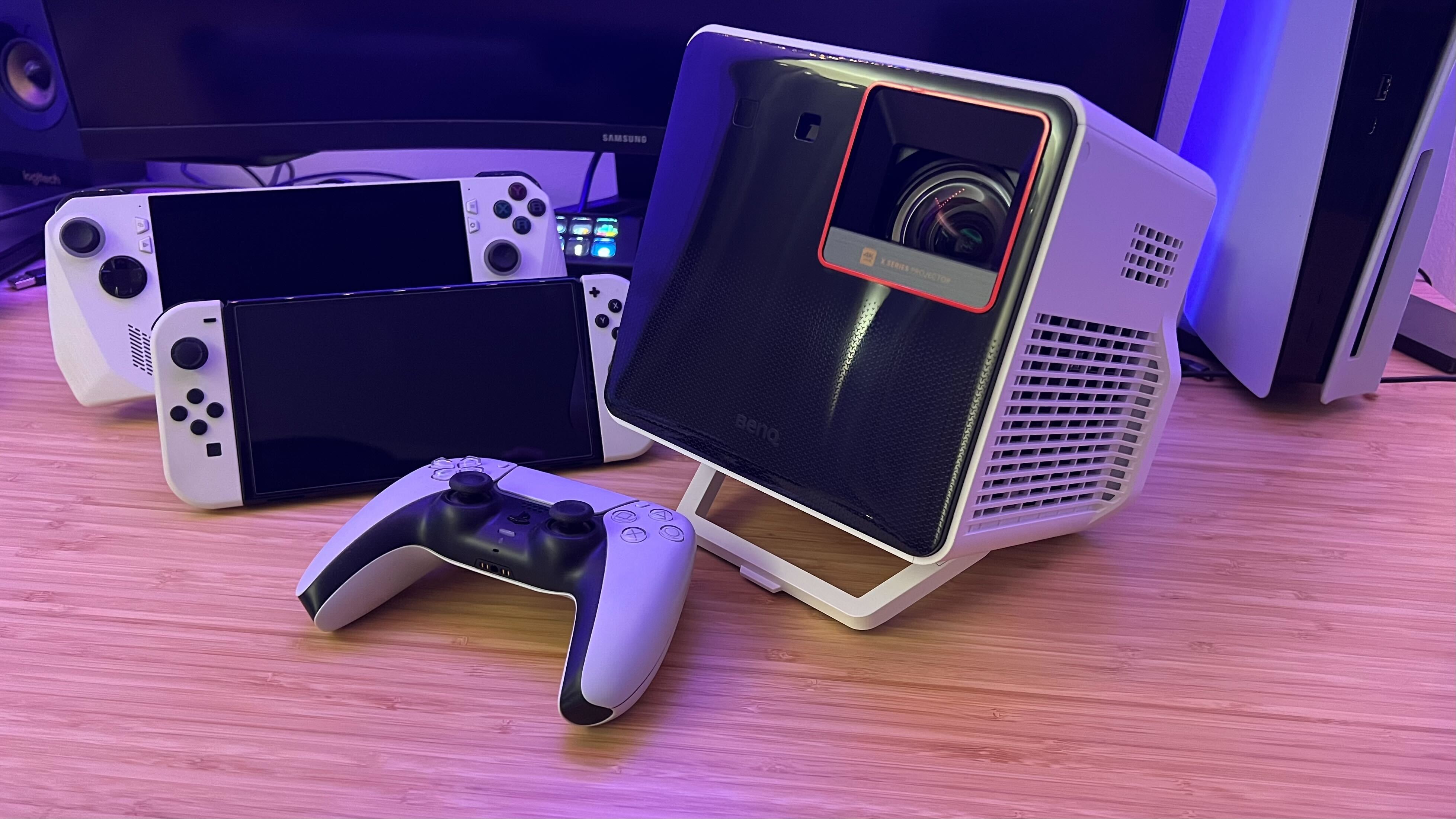GamesRadar+ Verdict
The BenQ X300G feels like it heralds a new era for gaming projectors. While it’s not so focused on providing the high-end ambient light viewing experience of beefier models in the range, its flexibility and ease of setup make it a particularly versatile piece of kit. There’s no use in buying a luxury projector if it’s too much faff to use it - and this feature set and design make it easier than ever to plug in and play.
Pros
- +
Flexible features and design
- +
Easy plug-and-play setup
- +
Bold colors with excellent contrast
- +
Low latency
- +
Workable internal speakers
Cons
- -
Loses more quality in ambient light than competitors
- -
Not strictly portable
Why you can trust GamesRadar+
BenQ is certainly no stranger to gaming projectors. The brand has been beaming our consoles onto the even-bigger screen for years now, consistently releasing some of the best options on the market. While it may have shrunk, the new BenQ X300G follows the same trajectory as the models before it.
There's something different going on here, though. While the boxy device might not be as 'portable' as BenQ wants you to believe, it's incredibly easy to set up, compact enough to sit pretty much anywhere, and has the power to output your games with startling quality. I've been running my PS5, Asus ROG Ally, and Nintendo Switch through the BenQ X300G for two months now, to see exactly where it falls among the best gaming projectors on the market.
| Price | $1,799 / £1,599 |
| Brightness | 2,000 lumens |
| Resolution | 3840×2160 |
| Light source | LED |
| Throw ratio | 0.69 - 0.83 |
| HDR | HDR10 |
| Audio | 2x 8W speakers |
| Ports | 2x HDMI, 2x USB Type-A, 1x DisplayPort |
| Dimensions | 8.3 x 7.1 x 7.7 inch |
| Weight | 6.6lb (3kg) |
Design
Without seeing it in the flesh, you’d be forgiven for thinking the X300G is a carbon copy of the brand’s previous gaming-focused projectors. The white chassis, textured black front, and boxy form factor all speak the same language as the BenQ X3000i and BenQ X1300i, just on a much smaller scale. Measuring at just 8.3 x 7.1 x 7.7 inches this is one of the smallest plug-in gaming projectors available - its width and height are roughly 23% smaller than the X300i, and it extends slightly less in depth as well. That means this is a nifty little number, content to sit pretty much anywhere you place it without getting in the way. I’ve had it perched on the edge of my desk for most of my testing period, where it’s never once got in the way. That’s certainly not something I could have said for the comparatively more imposing XGIMI Horizon Ultra.
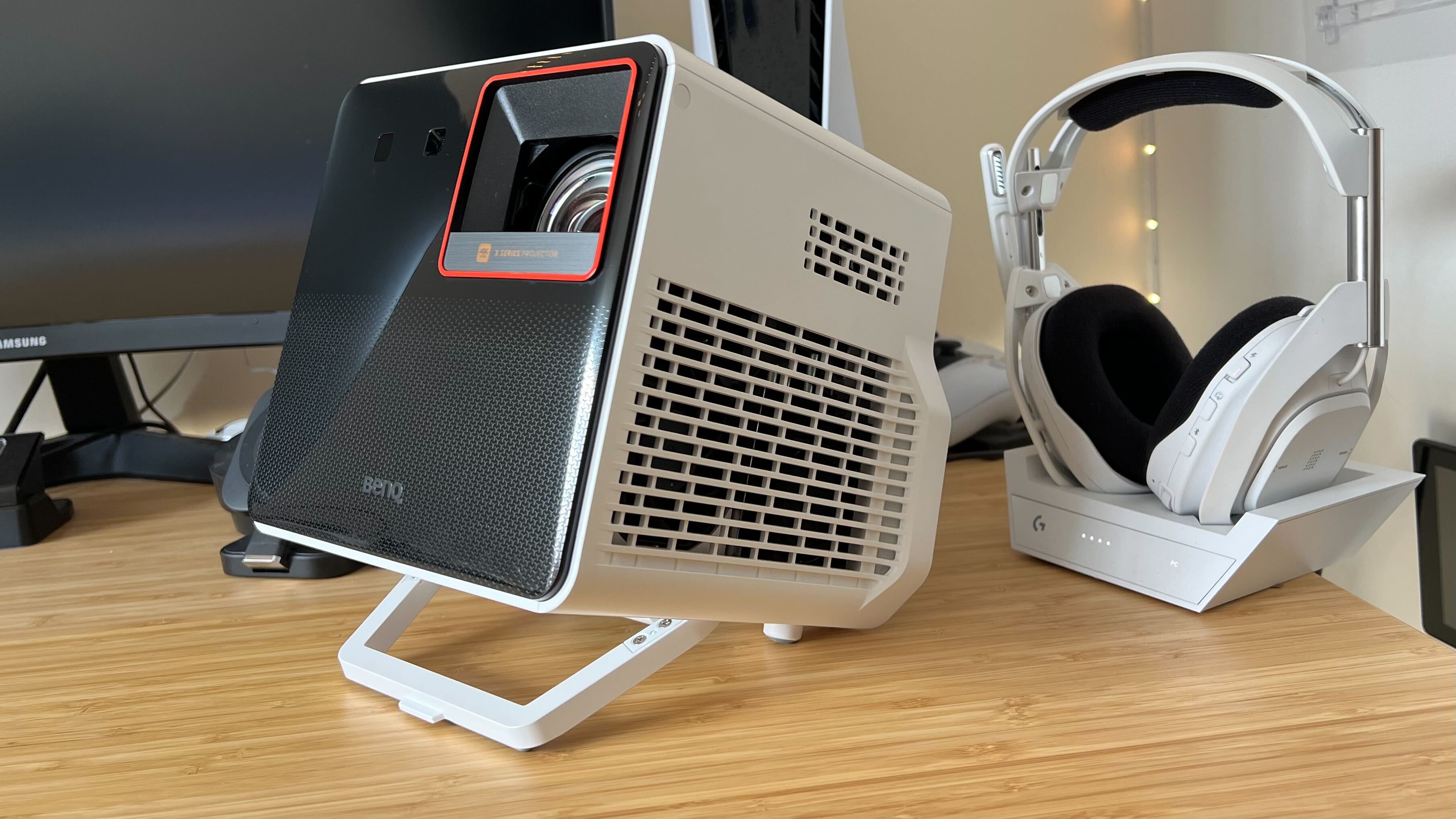
It’s compact, yes. But it’s not exactly a portable projector. This thing still weighs 6.6lbs, and it’s still chunky in its design. That means it’s not exactly backpackable, and the lack of an internal battery means you won’t be setting this up anywhere remote. What BenQ might mean when they say portable, then, is flexible. And the X300G has flexibility in buckets.
The smaller size and fairly short throw meant I was able to comfortably set it up both downstairs in a larger room and upstairs in a smaller bedroom. A riser stand underneath provides a little wiggle room in positioning and two solid rubber feet keep everything squarely in place once it’s set down.
The entire device feels sturdy and well-supported. There are plenty of air vents across the sides and rear panel that keep things cool during running, without overtaking the design too much. The similarly priced XGIMI Horizon Ultra does include a lens cover to keep your LEDs protected from dust which would have been nice to see implemented here as well.
Features
The biggest draw of the BenQ X300G is its ease of use. After making sure the projector was set up at an appropriate distance from the wall, and at the height necessary, there are plenty of automatic corrections applied by the device itself. While auto-keystoning never seemed to be able to correct a slight trapezoid shape on the first try, the simple drag and drop controls included in the projector’s settings made light work of final touches. Perhaps more impressively, the X300G also packs a motorized zoom (you’re more likely to find a digital zoom in devices at this price point, which can distort your image). I wouldn’t fiddle with these settings too much if you’re prioritizing speed, though. This is all extra work for the system, which does mean additional delay in your picture.
That ease means it’s tempting to cast the picture onto a blank wall rather than opting for a dedicated projector screen, which is exactly what I did for the majority of my testing. Yes, the cheap foldable screen I picked up off Amazon a few years ago did come in handy for movie nights, but day to day I found myself simply switching the projector on and letting it do its thing. Thankfully, BenQ knows its flexible design makes this scenario more likely - you’re unlikely to have a screen set up in every room of your house after all. That’s why the wall color settings are so impressive, allowing the projector to tailor its color profile to the tone of your wall to ensure an even picture. This is by no means a feature unique to the X300G, but it’s particularly well implemented for the use-case.
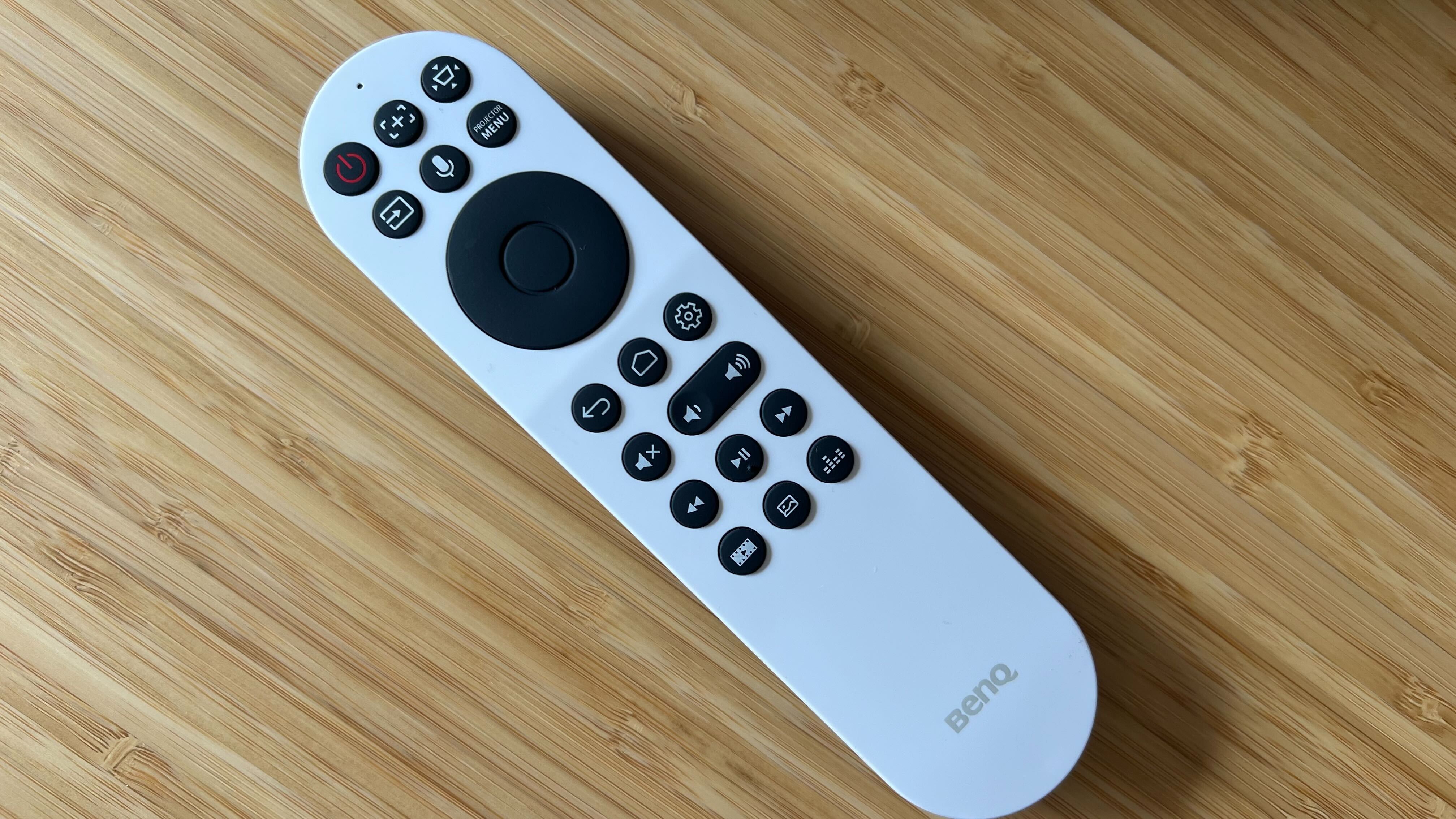
I’ve been switching between a bunch of different games and systems recently, hopping between Super Mario RPG on Nintendo Switch, Fallout 4 and New Super Lucky’s Tales on Asus ROG Ally, and Skyrim on PS5. BenQ isn’t as generous with ports as others in this price range, only offering one easily accessible HDMI (and HDMI 2.0 I might add - an odd choice for a gaming projector so focused on the console market) connection on the side, with the second housed under a piece of fixed plastic and designed only to be used with the complimentary Android TV streaming stick.
That meant there was a little more cable switching between devices than I would have liked when swapping between PS5 and a docked Nintendo Switch. However, there’s another trick up the X300G’s sleeve, a single USB-C port with both display and charging capabilities. That’s been a lifeline for me. The theory is that you’ll be able to plug your gaming handheld, be it a Nintendo Switch or something more demanding like the Asus ROG Ally, straight in via USB-C and have both big-screen play and charging at the same time.
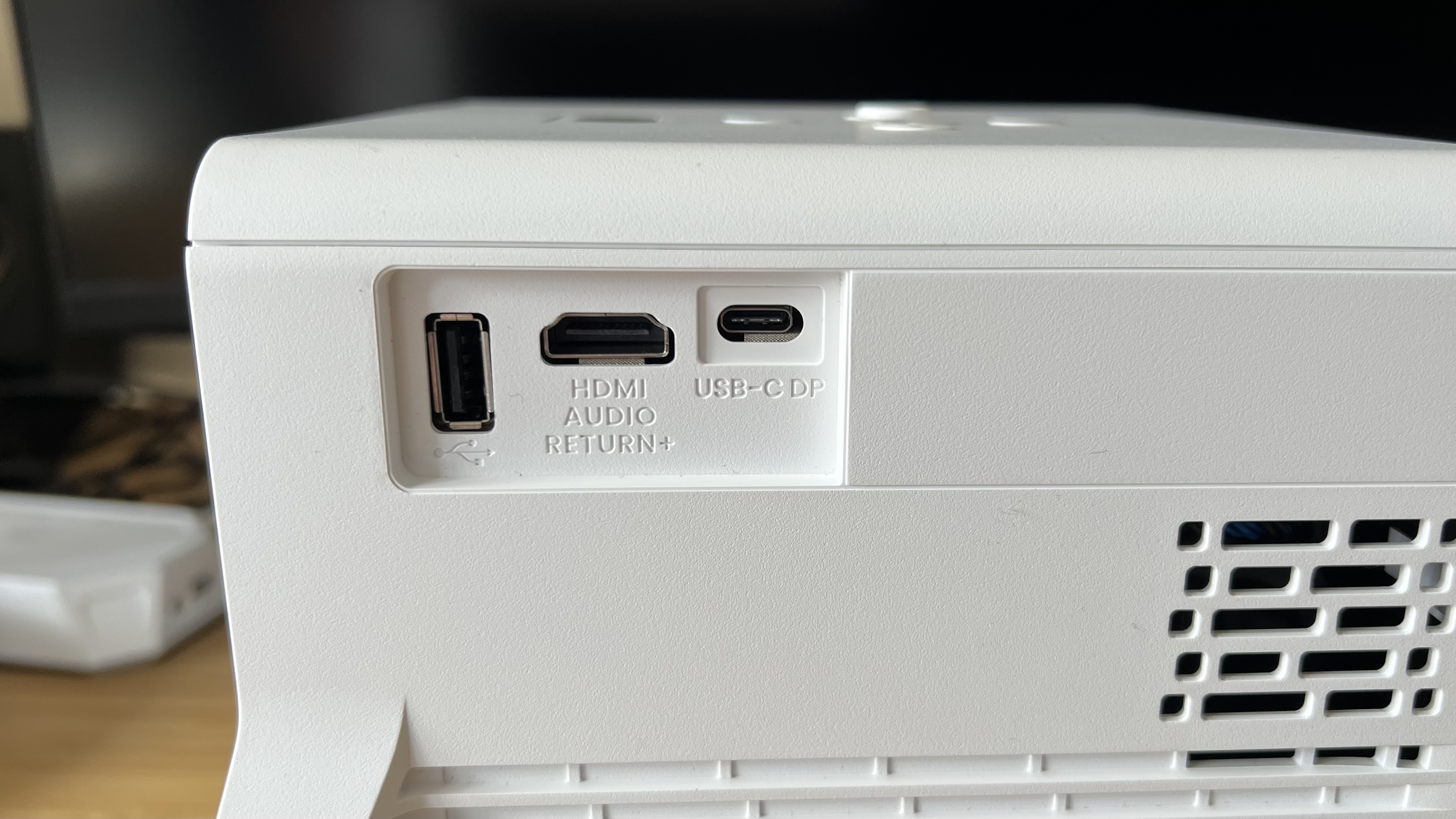
There are some caveats to the way BenQ has marketed this feature, though. The Ally running at 30W was just too hungry to be able to charge off the BenQ while also playing. That meant I did see some considerable framerate drops in both heavier and lighter titles. For Nintendo Switch to run through a single cable you'll need to invest in a proper piece of wire. I wasn't able to get the Switch talking to the X300G unless supplied with a Belkin USB 4 Thunderbolt 3 cable. Still, it’s a nifty feature that you won’t find in too many projectors of this size and price. There is also a USB-A port on the side.
That aforementioned Android streaming stick is particularly helpful for casual viewing when you don’t want to boot up a whole console. And once again, there’s a hidden treat for us. Netflix has made its way to projectors with the X300G, where very few devices have been deemed worthy of the streamer’s app in the past. Alongside that, you’ll find all your usual services downloadable via the Google Play Store. The streaming stick is fully controlled by the X300G’s remote, and sits neatly in the rear of the system so you don’t even need to think about it once installed.
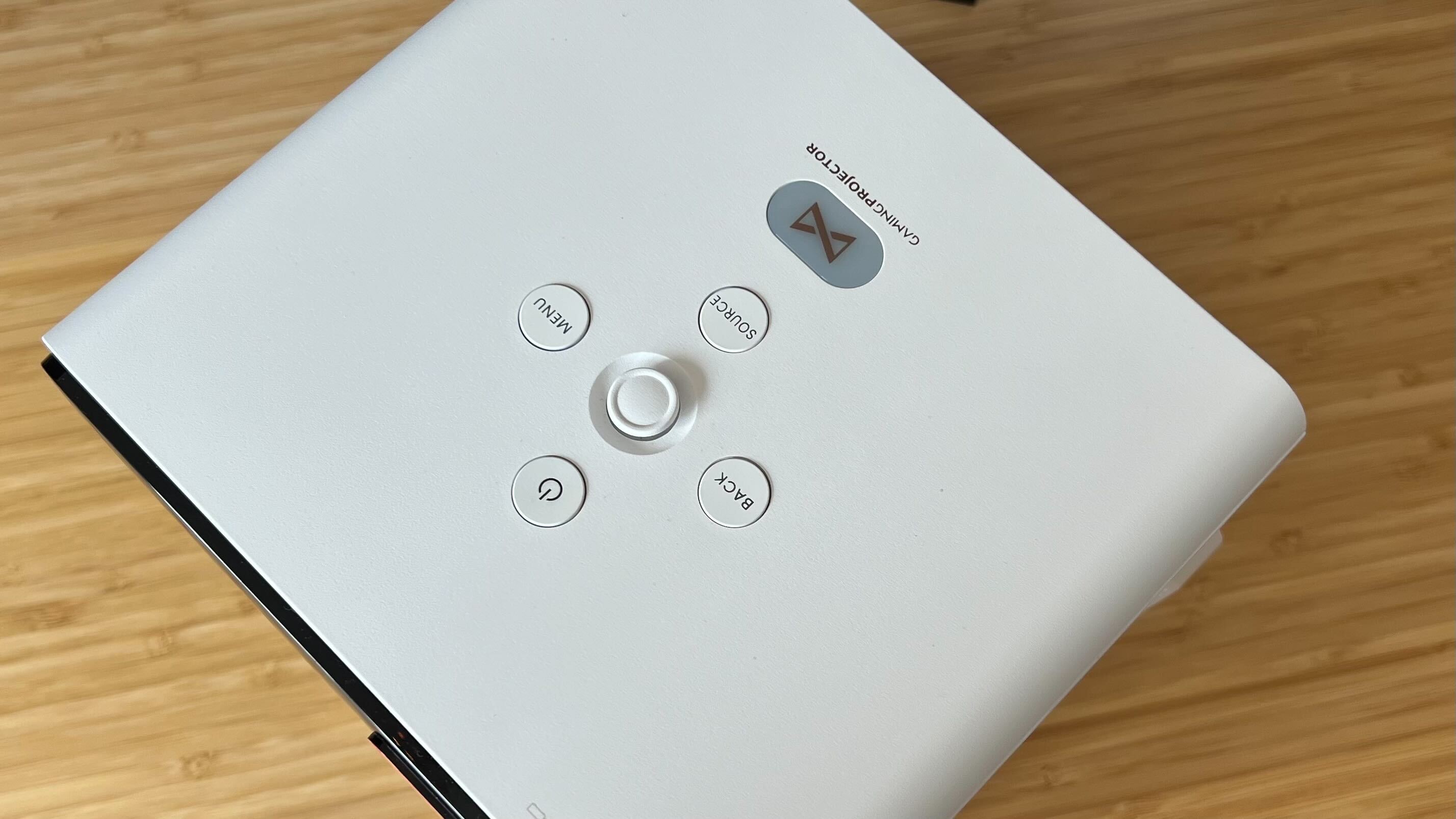
Two 8W speakers offer dedicated audio straight from the projector itself and, for the most part, it’s nicely passable. I still found myself seeking something a little more robust for bigger movies and action sequences, and needed more detailing than these drivers could produce during finer moments of gameplay, but for everyday browsing and light casual play they fill a room nicely with everything you need to hear.
Performance

The BenQ X300G is putting in a lot of work for its form factor; upscaling and outputting at 4K resolution while running at 4.16ms speeds at 1080p / 240Hz and 16ms in 4K / 60Hz. In the plainest of terms, it does all of this very well - but doesn’t match the sophistication you’ll find in a device with more chassis space.
Colors are rich and vibrant, but darker scenes can struggle to make their finer details heard and even low-level ambient light can quickly wash away a lot of your picture’s finesse. Brighter scenes were, naturally, sheltered from this effect, still managing to cut through with punchy color, especially in cooler tones. Similarly, HDR effects are best reserved for evening sessions - the brightness level on offer can’t quite break through natural lighting to offer this kind of contrast. That’s a tall order for any projector, but the XGIMI Horizon Ultra did fare better in these higher light conditions.
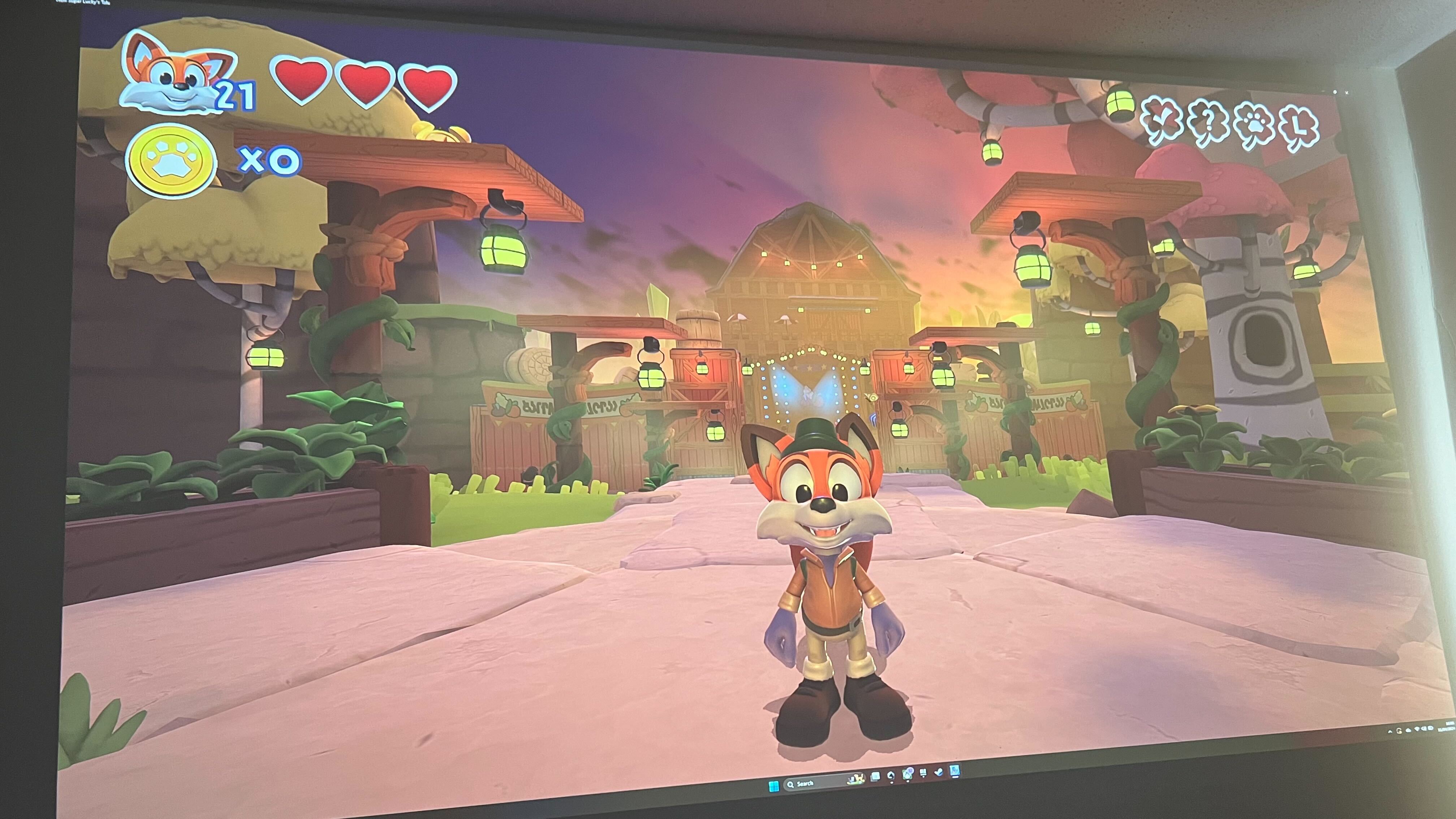
That’s not to say I wasn’t impressed with the BenQ X300G. Like most working folk I play my games at night anyway, rarely booting up the projector during the day outside of testing sessions and the odd Saturday morning cartoons any self-respecting nearly-30 year old should be enjoying.
With the lights off, the BenQ X300G is an incredibly exciting piece of tech. Princess Peach Showtime’s levels leaped off the wall with bright, incredibly accurate coloring and excellent definition to these simpler shapes. Muddier landscapes with more natural tones in Fallout 4 and Skyrim still managed to pop while keeping finer details crisp and clear, even during more frenzied movements. It’s difficult not to be impressed when you’ve got the whole of Skyrim laid out across your entire bedroom wall, but doing so with this level of finesse feels next-generation.
Of course, all projectors run better in low lighting conditions, and the X300G is definitely more than usable in the day. However, if you’re after a high-end experience in a well-lit environment you might need to go further up the price scale.
Should you buy the BenQ X300G?
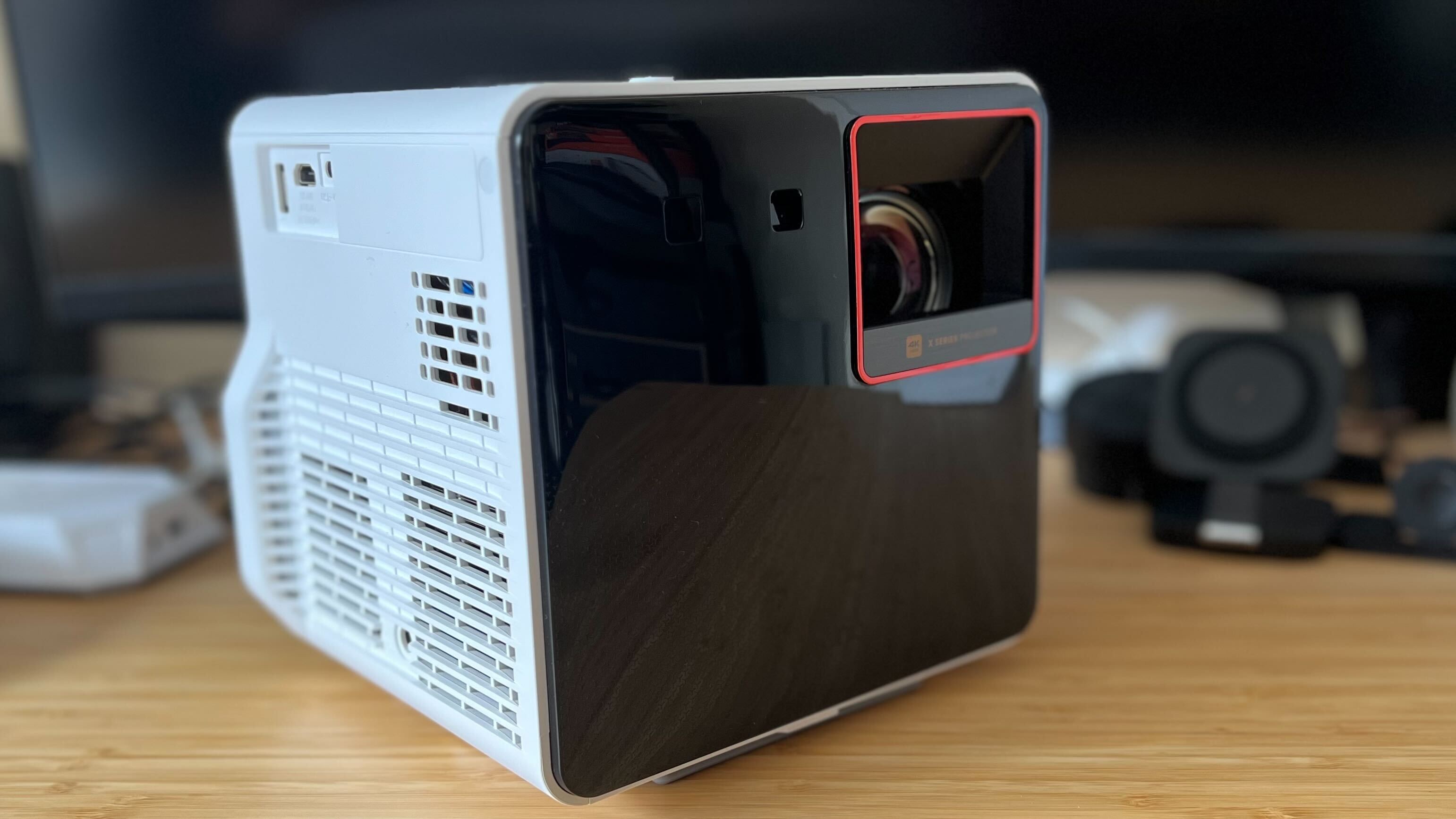
I would absolutely recommend the BenQ X300G to anyone looking for a dedicated gaming projector that doesn’t require years of experience to get up and running. This is a true plug-and-play device, able to take pretty much any setup you throw at it and have you fully immersed in seconds. That’s not something I can say about too many high-end options, which usually keep their best settings behind layers of complicated menus and jargon. You’re getting high-quality big-screen picture with low latencies straight out the box here, making it the perfect option for those upgrading to a 4K projector for the first time.
This isn’t a cheaper alternative to some of the more luxuriously priced models on the market, though. The Epson Pro Cinema LS12000 will still beat the X300G with its HDR profiles, port selection, and brightness. The Sony VPL-VW590ES will still take the trophy in the home entertainment arena. Both of these projectors are out of the BenQ X300G’s price league, though.
Really, we should be talking about the XGIMI Horizon Ultra ($1,699 / £1,649). With a larger footprint and much heavier form factor, you’re not going to be karting the Ultra up and down the stairs as much as the BenQ X300G. However, it does perform much better in higher lighting conditions and comes with additional HDR options for a visual boost as well.
How we tested the BenQ X300G
I used the BenQ X300G for two months, using the device for all PS5 play and most docked Asus ROG Ally and Nintendo Switch sessions during that time. I tested across a range of titles, including Fallout 4, Skyrim, Horizon Forbidden West, New Super Lucky’s Tale, Princess Peach Showtime, and Super Mario RPG. I also streamed plenty, watching Carol & the End of the World, Griselda, Away, Damsel, and Despicable Me 2 for specific testing purposes. For more information on how we test projectors, check out the full GamesRadar+ Hardware Policy.
We’re also rounding up all the best outdoor projectors and the best projectors for PS5 and Xbox Series X. Or, if you’re fully kitting out your setup, check out the best projector screens available now.

Managing Editor of Hardware at GamesRadar+, I originally landed in hardware at our sister site TechRadar before moving over to GamesRadar. In between, I've written for Tom’s Guide, Wireframe, The Indie Game Website and That Video Game Blog, covering everything from the PS5 launch to the Apple Pencil. Now, i'm focused on Nintendo Switch, gaming laptops (and the keyboards, headsets and mice that come with them), PS5, and trying to find the perfect projector.
